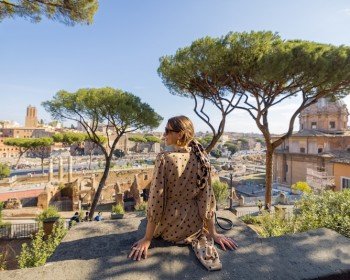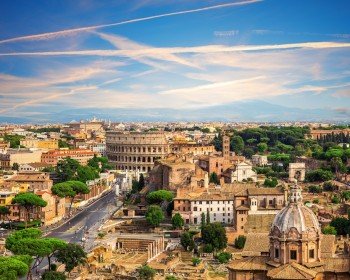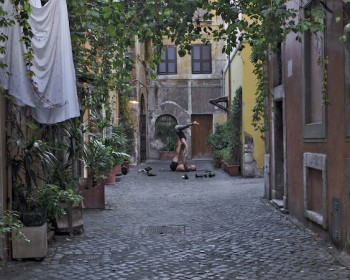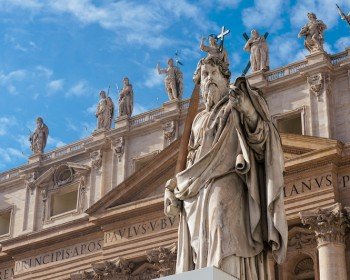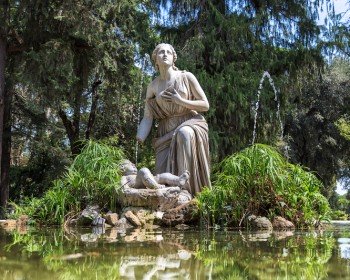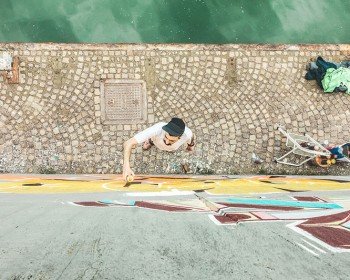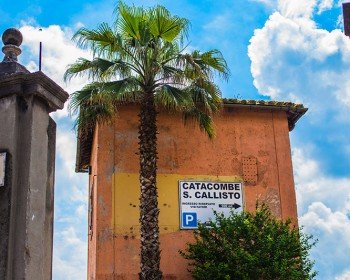Trick or treat? Halloween is coming! If you’re planning to come to Rome and still don’t know what to do, don’t worry, there are plenty of creepy and mysterious places suitable for a scary night!
We are not used to seeing the “dark” side of the eternal city, as it’s well renowned for daylight activities whereas the frightening and sinister ones are little known to the majority of people. Surprisingly, walking along the main streets of the city center it’s easy to find the perfect Halloween location.
Castel Sant'Angelo
Castel Sant'Angelo (Castle of the Holy Angel) is a cylindrical building known also as Hadrian’s mole because many centuries ago it was Emperor Hadrian himself that ordered the building of a mausoleum for him and his family.
The Castle is located in the Vatican area of the city, on the right bank of the Tiber, just in front of St. Peter’s and close to the other must-sees!
What is the creepy side of Castel Sant'Angelo? It is not a coincidence that the American writer Dan Brown chose this unique location to set his best-seller “Angels & Demons.”
So whilst entering by the bridge you will feel like Robert Langdon, you will discover the dungeons with its creepy tales: these were the places that hosted prisoners and heretics while they wait for execution or trial. Sometimes people were just accused of being heretics for no apparent reason, sometimes for something as trivial as they had been seen eating a Jewish dish.
Besides tales and legends about the past of Castle St. Angelo, the real secret place inside it is called “passetto”: it’s a small passage that connects the castle with the nearest district of Vatican by an 800 meters long path that goes directly to the Vatican building. It was used by the Pope in ancient times to escape from enemies and now is available for tours!
Cripta dei Cappuccini
What is the creepiest thing to do on Halloween? We recommend you visit the Capuchin Crypt, which is located inside the Church of Santa Maria della Concezione dei Cappuccini, in the central luxurious district of Via Veneto.
The scary crypt is located under the church and it was commissioned by Pope Urban VIII, whose brother was a Capuchin.
The main characteristic of this unusual crypt is that its walls are covered with real bones arranged in many different ways. But where did they come from? Many centuries ago the Friars started to bury both their own dead and bodies of poor Romans in this place and the Capuchins came here to pray to God in the night.
Nowadays the crypt contains the relics of 4000 friars buried between the sixteenth century and nineteenth century, when the Roman Church allowed people to be buried under churches.
The crypt is organized and divided into 5 chapels, enlightened only by faint natural light, small lamps and decorated with skulls and bones. For this reason it conveys a strong sense of fear and it’s the perfect place to celebrate Halloween.
When you will enter here you will notice a quote on the wall that says: “What you are now, we once were; what we are now, you shall be”, a reflection on human mortality.
Everything here in the Capuchin crypt seems to remind us of a “dark” world, the one between the unknown and the death: we promise you a super frightening tour!
Catacomb of Priscilla
Catacombs of Priscilla are located in the north area of Rome and are one of the best ancient examples of this particular underground path.
They were built under normal earth level by humans to practice religious rituals that usually were not allowed by society at that time; so, they were created in order to avoid persecution and even execution.
Priscilla Catacomb was used by Christians during Roman Empire Era, in particular between 2nd and 4th century, for burials. The Christian religion, in fact, wasn’t permitted by the Emperor, especially during the first centuries: only after the Constantine Era things changed.
These underground galleries were dug in the tuff (rocky earth) and are organized on 3 levels of 13 km length, a real subterranean labyrinth. Have you ever imagined how Christians used to feel and hide? By touring around in this underground cemetery you will experience a similar sense of fear as them. You will notice ancient paintings on the tuff walls that represent scenes from the Old Testament and everyday life.
Campo de Fiori – Giordano Bruno Statue
Campo de Fiori is a unique roman square located in the city center. It took the name from the way it was in middle ages. Many centuries ago it wasn’t a central square but a field full of grass and flowers and this is the translation of its name in Italian language (field of flowers).
Nowadays Campo de Fiori is used as a daily open market where you can find fruit, vegetables and typical Italian products whereas in ancient times, around 16th century, it was designated as a location for execution.
The philosopher Giordano Bruno, in fact, was jailed and then burned alive here by the Inquisition of the Catholic Church. Strolling around this square, you will notice a large bronze statue at its very center: it was erected and dedicated to him to remind people of his execution.
As you will see, the philosopher is depicted with his face in the same direction as Vatican. This is an admonition towards the Christian Church that refused his theories and thoughts. At the basement of the statue it’s still possible to read a small sentence and low reliefs about his trail and death.
What do you think about roman frightening places? Send us your recommendation and share your experiences with us and other friendly people just like you!
Would you like to receive more information about ghosts and Halloween Tours in Rome? Our staff is ready to assist you with everything you may need to spend an unforgettable Halloween day!
Don’t hesitate to contact us to get more ideas and book your special scary tour for you and your travel partners.


